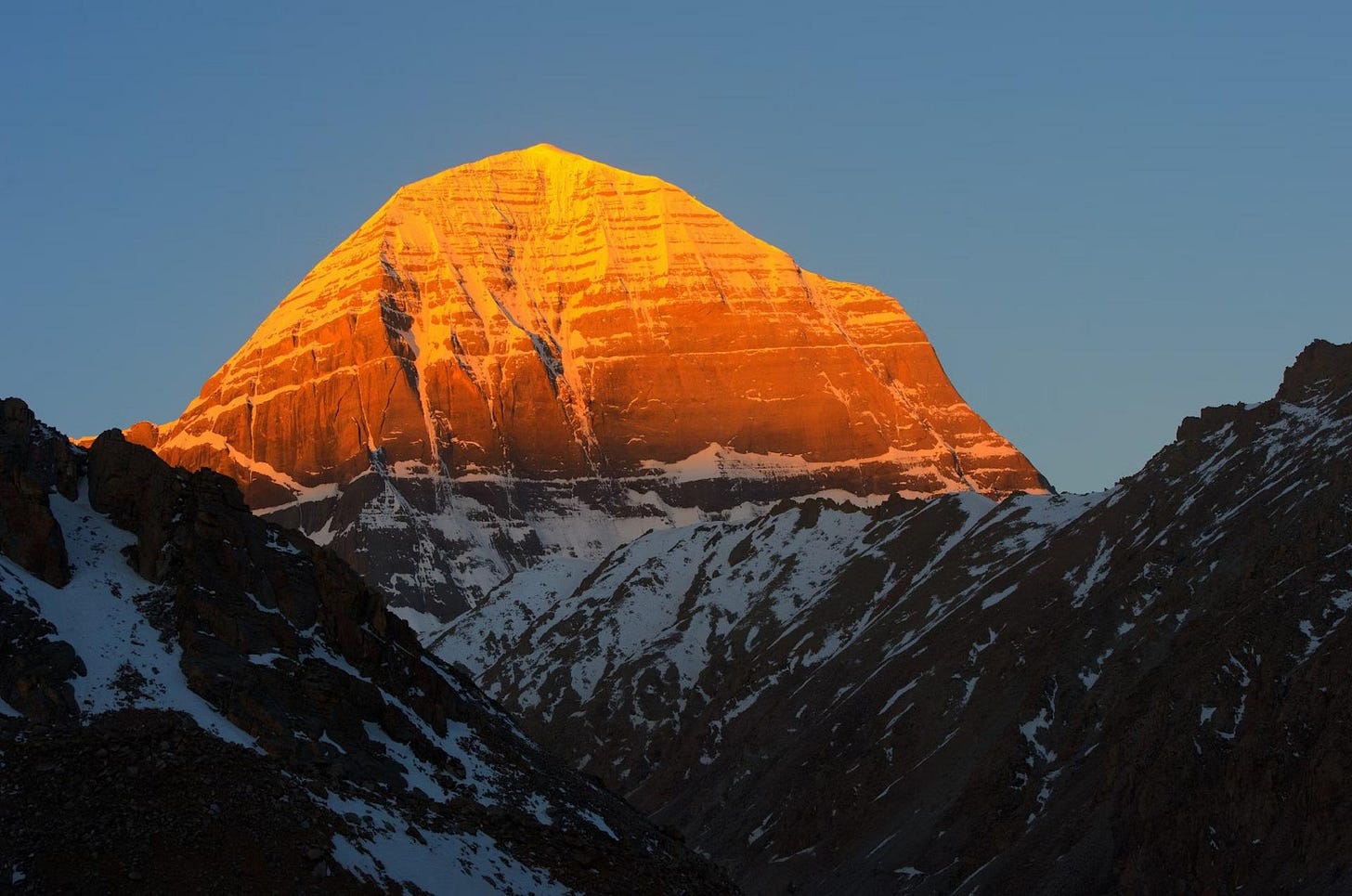Kailash Mansarovar: A Sacred Pilgrimage Worth Exploring
Must Visit for Everyone.
Kailash Mansarovar, nestled in the heart of the Tibetan plateau, is not just a place; it is a spiritual phenomenon. Beyond its breathtaking landscapes and religious significance, the region’s mystique lies in its deep historical roots, unique rituals, and awe-inspiring experiences. This article explores the best time to visit, must-do activities, fascinating history, unique phenomena, and why it continues to captivate devotees and adventurers alike.
The Best Time to Visit
The optimal time to visit Kailash Mansarovar is May to September, when the weather is relatively mild, and the trekking routes are accessible. During these months:
Temperature: Ranges from 5°C to 20°C during the day but drops significantly at night.
Clear Skies: Offer stunning views of Mount Kailash and Lake Mansarovar.
Festivals: Coincide with Tibetan celebrations, such as Saga Dawa, honoring Lord Buddha’s enlightenment.
Unique and Strange Phenomena at Kailash Mansarovar
Unclimbed and Untouched Summit
Mount Kailash remains one of the few peaks in the world that has never been climbed. This is due to its spiritual significance; scaling it is considered a desecration. Legends claim that attempting to climb Kailash results in severe repercussions.Mystical Axis Mundi
Believers describe Mount Kailash as the cosmic axis or "Axis Mundi", connecting Earth to the heavens. Some even argue that it resonates with inexplicable energies that calm the mind and soul.Time Distortion
Many pilgrims have reported unusual experiences with time, claiming it feels either accelerated or slowed down near the mountain. This remains an unsolved mystery, attracting scientists and spiritual seekers alike.The Shape of Mansarovar and Rakshastal
Lake Mansarovar is almost perfectly round, symbolizing purity and divinity.
Lake Rakshastal, its neighbor, has a crescent shape and is often associated with negativity and demonic energy in mythology. The stark contrast between these lakes fascinates pilgrims.
A Rich and Captivating History
Ancient Hindu Texts
References to Mount Kailash and Mansarovar date back to the Vedas, Upanishads, and Puranas. The Skanda Purana describes it as the earthly manifestation of Mount Meru, the spiritual axis of the universe.Buddhist and Jain Heritage
In Buddhism, the mountain is revered as the home of Chakrasamvara, a deity representing supreme bliss.
For Jains, it is associated with Rishabhadeva, the first Tirthankara, who attained liberation here.
Bon Tradition
The Bon religion, predating Buddhism in Tibet, views Kailash as a sacred mountain, representing nine spiritual layers of the world.Global Significance
Over centuries, the mountain has drawn explorers, sages, and scientists, each adding to its enigmatic allure. Tibetan Buddhism’s spread under King Songtsen Gampo further solidified Kailash’s reputation as a spiritual hub.
Best Things to Do Around Kailash Mansarovar
Circumambulate Mount Kailash
Pilgrimage Highlight: Walking the 52-kilometer kora (circumambulation) around Mount Kailash is the pinnacle of the journey.
Key Stops: The Dolma La Pass (5,636 meters) is the highest point, symbolizing spiritual ascension.
Take a Holy Dip in Lake Mansarovar
Spiritual Cleansing: Bathing in its icy waters is believed to wash away sins and purify the soul.
Unique Experience: Pilgrims often meditate by the lake for divine inspiration.
Visit Lake Rakshastal
While it is associated with negative energy in mythology, its stark beauty and eerie calmness make it worth exploring.
Meditation and Prayer
The serene environment around Kailash and Mansarovar makes it an ideal place for meditation, prayer, and seeking spiritual insights.Explore Nearby Monasteries
Chiu Monastery: Perched on a hill overlooking Mansarovar, it offers panoramic views and a tranquil ambiance.
Tirthapuri: A lesser-known pilgrimage site linked to Guru Padmasambhava.
Witness Saga Dawa Festival
This annual festival, celebrated in May or June, marks the enlightenment of Lord Buddha. It features vibrant rituals, prayers, and cultural performances.
Why Devotees Find It Fascinating
Divine Energy
Many pilgrims report a deep sense of peace and spiritual connection upon visiting Kailash Mansarovar. The site’s energy is believed to be transformative.Physical and Spiritual Test
The high-altitude trek challenges pilgrims both physically and mentally, adding to its profound spiritual reward.Symbol of Faith and Unity
Pilgrims from diverse religions—Hindus, Buddhists, Jains, and Bons—undertake the journey, showcasing its universal appeal.Healing Powers of Mansarovar
The lake’s waters are said to have healing properties, drawing seekers from around the world.Legends Come to Life
The journey allows devotees to witness the myths they’ve read about in scriptures, bringing their faith to life.
Tips for Pilgrims and Travelers
Preparation: Train for high-altitude trekking and carry essentials like oxygen cylinders, warm clothing, and energy supplements.
Permits: Ensure you have the necessary permits from the Chinese authorities.
Local Guides: Hire experienced guides to navigate the challenging terrain.
Respect the Culture: Adhere to local customs, including silence in sacred areas.
Hydration and Acclimatization: Stay hydrated and allow time to acclimatize to the altitude.
Kailash Mansarovar offers more than just a journey; it provides a lifetime of spiritual fulfillment and awe. From its celestial peaks and mystical lakes to its rich history and religious significance, every element of this sacred region invites reverence. Whether you are a devout pilgrim or a curious traveler, Kailash Mansarovar promises an experience that transcends the physical realm, touching the deepest corners of your soul.
For the devout, it is a once-in-a-lifetime opportunity to connect with the divine. For others, it is a rare glimpse into the confluence of nature, history, and spirituality. Whatever the purpose, Kailash Mansarovar is a journey worth undertaking.


